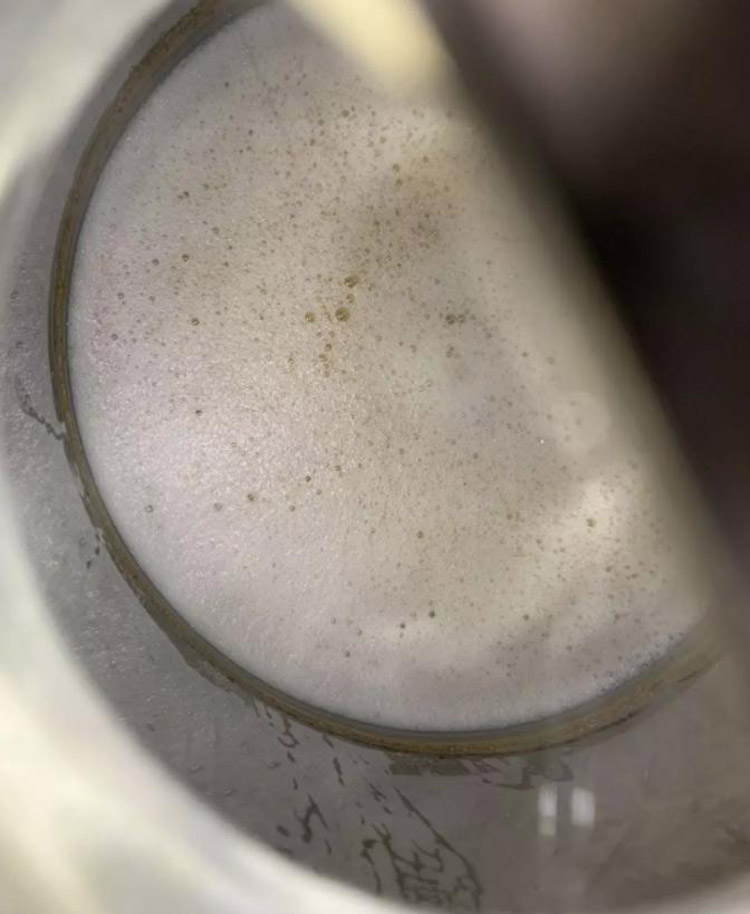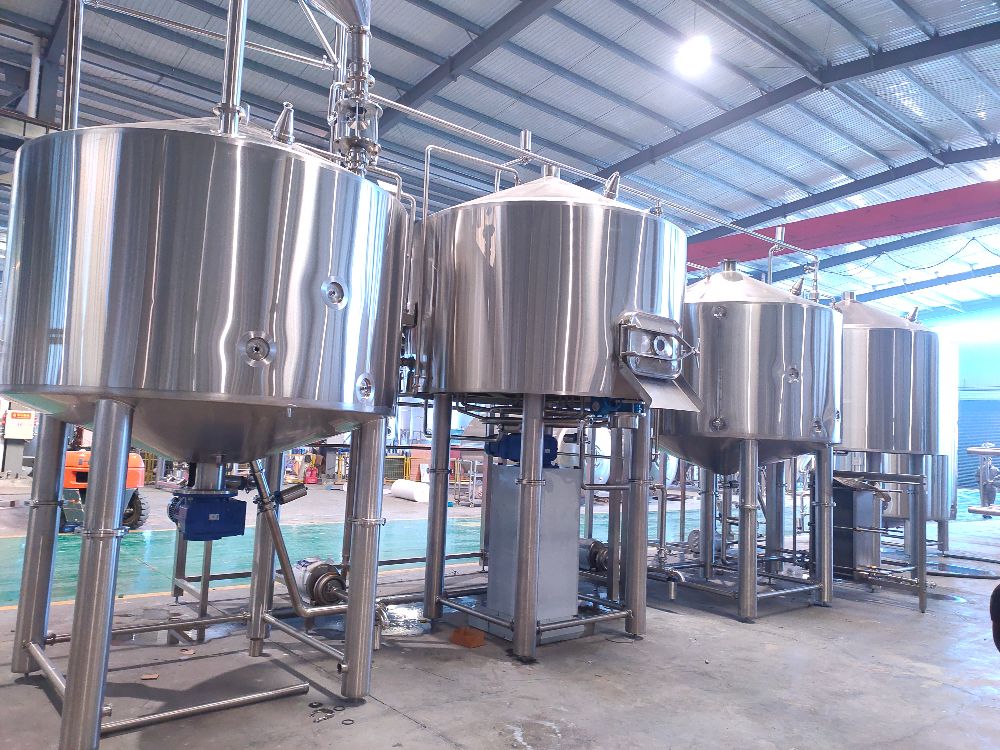Yeast fermentation process in microbrewery
- Dec 07, 2019
- 111
- tiantai
Yeast fermentation process in microbrewery
Yeast fermentation goes through four stages:
the inspiration phase, the rapid proliferation phase, the calm phase, the yeast sedimentation, and the second-fermentation phase.

1. Inspiration stage
0-15 hours after inoculation, the yeast is in the inspiration phase. At this stage, the yeast is adapting to the new environment and slowly absorbing nutrients. Sometimes tiny bubbles are generated. For dry yeast, it is also the stage in which the yeast is slowly repaired.
At this stage, if the amount of yeast inoculation is small, the bacteria will proliferate rapidly, causing 'sour' in beer.
If the amount of yeast is appropriate, the bacteriostasis of yeast will inhibit the proliferation of bacteria, without worrying about the effects of bacteria.
At this time, the yeast (wet yeast) will absorb a large amount of oxygen to reserve energy for the next rapid proliferation.
2.Rapid proliferation stage
Yeast requires oxygen to synthesize unsaturated fatty acids and sterols in preparation for subsequent yeast proliferation and alcohol fermentation. However, when dissolving oxygen, you need to control the amount of oxygen. Reasons:
Excessive dissolved oxygen: It causes fast fermentation and short fermentation time. The yeast proliferates too fast, the beer body is light, with much off-flavors, but lack of some desired- flavor.
If the dissolved oxygen is not enough: The wort is slow to inspire. After several generations, the yeast activity is significantly reduced, the residual sugar is too high, and the fermentation time is prolonged.
4-48 hours after yeast inoculation (25-96 hours of Rag) is a rapid proliferation stage. According to different yeasts, the proliferation rate is faster or slower. This stage is further divided into two parts: the aerobic phase (There is saturated dissolved-oxygen in the dry yeast, no need oxygenation) and the anaerobic phase.
Aerobic phase: The yeast synthesizes the unsaturated fatty acids and auxins required for growth, while the yeast grows and multiplies to produce flavor.
Anaerobic phase: the previously synthesized substance is consumed, the yeast proliferates, and meanwhile produces a large amount of alcohol and flavor. At this stage, the yeast proliferates slowly and the yeast ages.
3. Calm period
At this stage, most of the sugar in the wort has been degraded, and the sugar at this time is mostly trisaccharide. The beer at this stage is called green beer/tender beer. The flavor of the beer has been shaped, and the yeast will metabolize the by-products and bad flavors produced by the main fermentation at this time, while making the beer softer and taste better.
Note during the calm period:
1. If the yeast ages and the vitality is lowered, the bad flavor in the beer body will not degrade well and will remain in the beer. This can be improved by inscreasing the temperature (to increase yeast vigor ) or add new yeast.
2, The dying yeast will settle and die at this time. If the yeast is not drained timely, it will produce a dead yeast flavor.
3, The residual sugar in the beer is too high. You can adjust the residual sugar by cooling or warming.
4.At this time, the yeast began to settle. The dead yeast was first settled, and the yeast in good condition settled later. Finally, the settled ones are the chip.
When control this process, Ale can maintain the fermentation temperature until the fermentation is terminated. The lagers preferably raises the temperature to facilitate the reduction of the bad flavor. At this time, the change in beer taste and flavor can be clearly felt.
Note that you cannot cool down quickly at this time.
4. Settlement period
After the fermentation is terminated, it is best to cool down beer to a lower temperature for 3-5 days for further maturing (also called second-fermentation). Generally 10-15 degrees for Ale and 5-7 degrees for Lager.
This temperature is an ideal for yeast recovering. The most yeasts with good performance have settled. Compared with the yeast after dropping below 4 degrees, the yeast recycled at this period has short adaptation period when re-inoculation, and the yeast cold stimulation is small.
The top layer, which finally precipitates, has the least amount of yeast floc and may also have Colony-mutation for breathing.
In the middle layer, the yeast floc is medium and the hypoglycemic ability is medium.
The bottom layer, which precipitates first, has weak hypoglycemic ability, and has the most yeast floc, containing early-dead-yeast
The sedimentation ability is different for different yeast .
The Lager has a strong settling ability, and the yeast mud is very thick and muddy.
Ale yeast settling ability is various in different cases. The ales yeast with good flocculent ability is equivalent as lager yeast. The ale yeast with poor flocculation, the yeast mud is very thin, and sometimes the yeast sinks down. At this time, it needs to be inverted, and decrease the temperature to accelerate the sedimentation.
After the first 3-5 days of fermentation, it is necessary to discharge the dead yeast and condensate residue every day in time, otherwise it will affect the beer body.
Jana
[email protected]
Tiantai beer equipment CO.,Ltd.
Yeast fermentation goes through four stages:
the inspiration phase, the rapid proliferation phase, the calm phase, the yeast sedimentation, and the second-fermentation phase.

1. Inspiration stage
0-15 hours after inoculation, the yeast is in the inspiration phase. At this stage, the yeast is adapting to the new environment and slowly absorbing nutrients. Sometimes tiny bubbles are generated. For dry yeast, it is also the stage in which the yeast is slowly repaired.
At this stage, if the amount of yeast inoculation is small, the bacteria will proliferate rapidly, causing 'sour' in beer.
If the amount of yeast is appropriate, the bacteriostasis of yeast will inhibit the proliferation of bacteria, without worrying about the effects of bacteria.
At this time, the yeast (wet yeast) will absorb a large amount of oxygen to reserve energy for the next rapid proliferation.
2.Rapid proliferation stage
Yeast requires oxygen to synthesize unsaturated fatty acids and sterols in preparation for subsequent yeast proliferation and alcohol fermentation. However, when dissolving oxygen, you need to control the amount of oxygen. Reasons:
Excessive dissolved oxygen: It causes fast fermentation and short fermentation time. The yeast proliferates too fast, the beer body is light, with much off-flavors, but lack of some desired- flavor.
If the dissolved oxygen is not enough: The wort is slow to inspire. After several generations, the yeast activity is significantly reduced, the residual sugar is too high, and the fermentation time is prolonged.
4-48 hours after yeast inoculation (25-96 hours of Rag) is a rapid proliferation stage. According to different yeasts, the proliferation rate is faster or slower. This stage is further divided into two parts: the aerobic phase (There is saturated dissolved-oxygen in the dry yeast, no need oxygenation) and the anaerobic phase.
Aerobic phase: The yeast synthesizes the unsaturated fatty acids and auxins required for growth, while the yeast grows and multiplies to produce flavor.
Anaerobic phase: the previously synthesized substance is consumed, the yeast proliferates, and meanwhile produces a large amount of alcohol and flavor. At this stage, the yeast proliferates slowly and the yeast ages.
3. Calm period
At this stage, most of the sugar in the wort has been degraded, and the sugar at this time is mostly trisaccharide. The beer at this stage is called green beer/tender beer. The flavor of the beer has been shaped, and the yeast will metabolize the by-products and bad flavors produced by the main fermentation at this time, while making the beer softer and taste better.
Note during the calm period:
1. If the yeast ages and the vitality is lowered, the bad flavor in the beer body will not degrade well and will remain in the beer. This can be improved by inscreasing the temperature (to increase yeast vigor ) or add new yeast.
2, The dying yeast will settle and die at this time. If the yeast is not drained timely, it will produce a dead yeast flavor.
3, The residual sugar in the beer is too high. You can adjust the residual sugar by cooling or warming.
4.At this time, the yeast began to settle. The dead yeast was first settled, and the yeast in good condition settled later. Finally, the settled ones are the chip.
When control this process, Ale can maintain the fermentation temperature until the fermentation is terminated. The lagers preferably raises the temperature to facilitate the reduction of the bad flavor. At this time, the change in beer taste and flavor can be clearly felt.
Note that you cannot cool down quickly at this time.
4. Settlement period
After the fermentation is terminated, it is best to cool down beer to a lower temperature for 3-5 days for further maturing (also called second-fermentation). Generally 10-15 degrees for Ale and 5-7 degrees for Lager.
This temperature is an ideal for yeast recovering. The most yeasts with good performance have settled. Compared with the yeast after dropping below 4 degrees, the yeast recycled at this period has short adaptation period when re-inoculation, and the yeast cold stimulation is small.
The top layer, which finally precipitates, has the least amount of yeast floc and may also have Colony-mutation for breathing.
In the middle layer, the yeast floc is medium and the hypoglycemic ability is medium.
The bottom layer, which precipitates first, has weak hypoglycemic ability, and has the most yeast floc, containing early-dead-yeast
The sedimentation ability is different for different yeast .
The Lager has a strong settling ability, and the yeast mud is very thick and muddy.
Ale yeast settling ability is various in different cases. The ales yeast with good flocculent ability is equivalent as lager yeast. The ale yeast with poor flocculation, the yeast mud is very thin, and sometimes the yeast sinks down. At this time, it needs to be inverted, and decrease the temperature to accelerate the sedimentation.
After the first 3-5 days of fermentation, it is necessary to discharge the dead yeast and condensate residue every day in time, otherwise it will affect the beer body.
Jana
[email protected]
Tiantai beer equipment CO.,Ltd.



.jpg)
